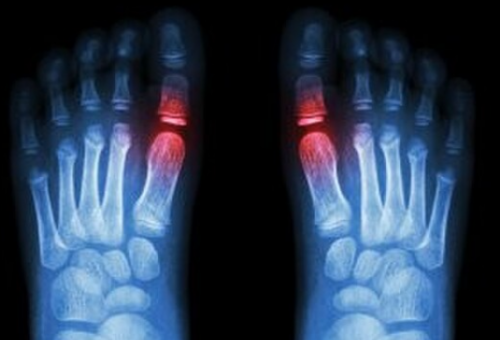Sesamoiditis – ‘bottom of the big toe pain’

Anatomy
Anyone who has been struck down by ‘sesamoiditis’ will know that is debilitating. So what is it?
Sesamoid is a term that suggests a bone suspended in a joint capsule or tendon. The most obvious sesamoid in the body is the patella (or knee cap) which is suspended in the quadricep tendon. The sesamoids we are looking at in this article are under the base of the forefoot underneath the big toe joint. The big toe joint has two small sesamoid bones, one on the inside of the joint and one on the outside.
What are they for?
The muscles that bend (flex) the big toes joint pass underneath the big toes joint, crossing over the two sesamoid bones. The bump that is formed by the two sesamoid bones acts as a fulcrum point for these muscles, giving the muscles the necessary leverage to flex the big toe. Every time you push off against the toe the sesamoids are involved, and eventually they can become irritated, even fractured. Because the bones are actually within the tendons, sesamoiditis is really a kind of tendinitis – the tendons around the bones become inflamed as well. The sesamoid bones also act to protect the underlying soft tissues during walking and running.
How does Sesamoiditis develop?
‘itis’ is a suffix that means ‘inflammation’. Hence Sesamoiditis is a term that suggests the sesamoid bones and the surrounding tissues have become inflamed.
The major cause of Sesamoiditis is increased training You may have stepped up the intensity of training, started hills, changed to flats or spikes or started speed work. If you have a bony foot, you simply may not have enough fat about your sesamoids to protect them from repetitive loading. Also, if you have a high arched foot, you will naturally run on the balls-of-your-feet, adding even more pressure.
Sesamoiditis typically can be distinguished from other forefoot conditions by its gradual onset. The pain usually begins as a mild ache underneath the big toe joint on toe off, and increases gradually as the aggravating activity is continued. It may build to an intense throbbing. In most cases there is little or no bruising or redness.
In severe cases, fractures may also develop. This is usually due to a fall onto the big toe joint. Hence when running rocky trails or jumping over logs in the bush and landing on a rocky surface. Less severe stress fractures can occur. These are predominantly due to repetitive load to the area rather than a one off trauma.
For the more mature, well miled runner, arthritis can develop where the sesamoids glide under the bone of the big toe. The sesamoid bones create a joint where they move against the bone of the big toe. Like other joints in the body, this joint can also develop arthritis. Arthritis is more likely to be a problem in people who have high arches in their feet. The high arch causes the main joint of the big toe to become rigid. This focuses strain and pressure on the sesamoids.
What does sesamoiditis feel like?
People with sesamoid problems usually feel vague pain under the main joint of the big toe and this area often feels tender to very painful when touched. Movement of the big toe is often limited. Pain is worst at toe off. Occasionally the joint catches or pops. The catching or popping is often followed by increased pain, which usually eases after resting.
Treatment
Sesamoiditis calls for a strict period of rest with the use of a modified shoe or a shoe pad to reduce pressure on the affected area. Yes, that was a period of rest,…arrrghhh! Those little fellas often just need time to heal. You may be lucky and find a padding that decreases or even alleviates the pain. This may be accomplished by placing a metatarsal pad (small foam pad placed under the foot) away from the big toe joint so that it redistributes the load of walking/running to other areas of the forefoot. Forms of strapping may help. Limiting the amount of big toe extension with tape, or altering the position of the big toe joint with regard to its valgus/varus angle (angle of big toes ‘to’ or ‘away’ from midline) with tape may also help.
Ice will help limit swelling and inflammation. Anti-inflammatories may also help – please consult your sports physician for advice on this matter.
The best form of treatment is to wear adequate footwear to prevent the disorder. Once it begins, it’s difficult to ignore or remedy. Don’t be hasty in spring track sessions or sudden ‘Doyles hill’ efforts (for all you Canberra runners!).
Happy running.